Superfund Sites in Reuse in Georgia
If you are having trouble viewing the map in your browser, click the 'View larger map' link below
Armstrong World Industries 
The 130-acre Armstrong World Industries (AWI) Superfund site is located in Macon, Georgia, next to the Macon Naval Ordnance Plant (MNOP) Superfund site. The AWI site consists of two parcels. AWI has manufactured ceiling tiles on site since 1948. The northern parcel contains the manufacturing area, the wastewater treatment plant (WWTP) area, the 7.7-acre WWTP landfill, and the 3.8-acre Woodyard Landfill. AWI capped the Woodyard Landfill in 2004 under state oversight. The southern parcel contains the Armstrong Remote Landfill, which is contiguous with the Former Macon Naval Ordnance Landfill (FMNOL). EPA placed the site on the National Priorities List (NPL) in 2011. Work at the site has been divided into two parts, or operable units (OUs). Using Superfund’s removal authority, OU1 addressed the WWTP landfill, which was capped in 2016. The cap area now includes a pollinator meadow that provides erosion control for the engineered cap’s soil cover. The Armstrong Macon Meadow is planted with over 50 locally native plants representing the natural history of central Georgia, and provides habitat for bees, butterflies, birds and other species while providing a sustainable and cost-effective alternative to mowing the cap each year. Collaboration among Region 4, AWI and the nonprofit Pollinator Partnership made the meadow possible. AWI is the sole party responsible for cleanup of OU1. In 2018, EPA completed negotiations with several parties, including AWI, responsible for cleanup of OU2. OU2 cleanup will address fish and other living organisms, sediment, drainage ditches and groundwater in the Rocky Creek and Armstrong Remote Landfill/FMNOL. Field investigations for OU2 are anticipated to start in 2019 and will include public outreach for both the AWI and MNOP sites.
Last updated September 2019
As of December 2019, EPA had data on one on-site business. This business employed 453 people and generated an estimated $82,923,000 in annual sales revenue. For additional information click here.
For more information:
- Sites in Reuse: Armstrong World Industries, Inc (PDF) (1 pg, 1.5 MB)
- Supporting the Health of Pollinators: Ecological Reuse and the Armstrong World Industries Superfund Site (PDF)(2 pp, 1.1 MB, About PDF)
- Superfund Site Profile Page
Camilla Wood Preserving Company 
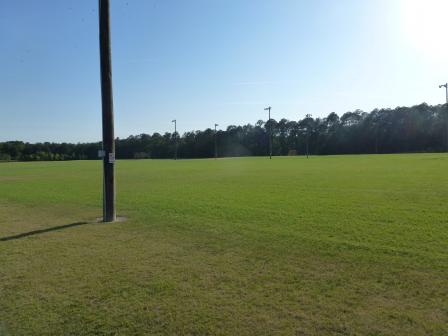 Camilla Wood Preserving CompanyThe 54-acre Camilla Wood Preserving Superfund site is located in Camilla, Georgia. Wood preserving facilities were active on site from 1947 to 1991. Facility operations resulted in soil and groundwater contamination. EPA led investigations and short-term cleanups between 1991 and 2007. Cleanup included wastewater treatment and disposal, site fencing, and removal of contaminated soil, equipment and debris. EPA added the site to the National Priorities List (NPL) in 1998. Additional cleanup activities are addressing contamination on the eastern part of the site. The city of Camilla (the City) used EPA Superfund Redevelopment Initiative pilot funding for a reuse planning process led by a community-based committee. The committee determined that the site would be an ideal location for a soccer complex. It also identified the community’s other recreation priorities. Today, the Mitchell County Recreation Complex on site offers several soccer fields and an RV park. Site reuses also include an aerobics classroom, office space for the county’s Parks & Recreation Department, a concession stand and parking. In 2012, EPA Region 4 recognized the City and Mitchell County with its Excellence in Site Reuse award. The City and Mitchell County have also drawn up plans for more recreational uses at the site. Potential future uses include basketball courts, baseball fields, batting cages, a playground, picnic tables and a volleyball court. New trails could also connect the site with downtown Camilla after cleanup.
Camilla Wood Preserving CompanyThe 54-acre Camilla Wood Preserving Superfund site is located in Camilla, Georgia. Wood preserving facilities were active on site from 1947 to 1991. Facility operations resulted in soil and groundwater contamination. EPA led investigations and short-term cleanups between 1991 and 2007. Cleanup included wastewater treatment and disposal, site fencing, and removal of contaminated soil, equipment and debris. EPA added the site to the National Priorities List (NPL) in 1998. Additional cleanup activities are addressing contamination on the eastern part of the site. The city of Camilla (the City) used EPA Superfund Redevelopment Initiative pilot funding for a reuse planning process led by a community-based committee. The committee determined that the site would be an ideal location for a soccer complex. It also identified the community’s other recreation priorities. Today, the Mitchell County Recreation Complex on site offers several soccer fields and an RV park. Site reuses also include an aerobics classroom, office space for the county’s Parks & Recreation Department, a concession stand and parking. In 2012, EPA Region 4 recognized the City and Mitchell County with its Excellence in Site Reuse award. The City and Mitchell County have also drawn up plans for more recreational uses at the site. Potential future uses include basketball courts, baseball fields, batting cages, a playground, picnic tables and a volleyball court. New trails could also connect the site with downtown Camilla after cleanup.
Last updated September 2019
As of December 2019, EPA had data on one on-site business. This business employed 5 people. For additional information click here.
For more information:
- Site Redevelopment Profile for the Camilla Wood Preserving Superfund Site (PDF)(3 pp, 2.8 MB)
- Camilla Wood Preserving Company, Camilla, GA - Reuse Framework (PDF) (68 pp, 8.1 MB)
- Growing Toward Tomorrow, Together: Integrating Remedy and Reuse - The Camilla Wood Preserving Superfund Site in Camilla, Georgia (PDF) (12 pp, 6.8 MB)
- Superfund Site Profile Page
Cedartown Industries, Inc.
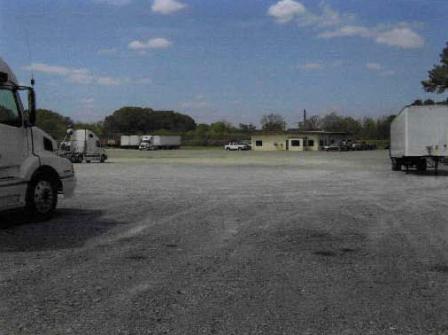 Cedartown Industries, Inc.The 7-acre Cedartown Industries, Inc. Superfund site is located in Cedartown, Georgia. Industrial activities started on site in 1874. Operators performed iron-ore smelting, secondary lead smelting, and pump-and-plow blade manufacturing. In 1986, an inspection by the Georgia Environmental Protection Division found that site activities had contaminated soil, sediment and groundwater with heavy metals. EPA placed the site on the National Priorities List (NPL) in 1990. Later that year, cleanup activities included the removal and disposal of slag, contaminated debris, soil, wastewater and sediment. In 1996 and 1997, the site’s potentially responsible parties performed additional cleanup activities. Cleanup included the excavation and on-site treatment of contaminated soil and long-term groundwater monitoring as well as land and groundwater use restrictions. After cleanup finished, EPA took the site off the NPL in 2006. The current site owners purchased the property in August 1984 and use it for trucking operations.
Cedartown Industries, Inc.The 7-acre Cedartown Industries, Inc. Superfund site is located in Cedartown, Georgia. Industrial activities started on site in 1874. Operators performed iron-ore smelting, secondary lead smelting, and pump-and-plow blade manufacturing. In 1986, an inspection by the Georgia Environmental Protection Division found that site activities had contaminated soil, sediment and groundwater with heavy metals. EPA placed the site on the National Priorities List (NPL) in 1990. Later that year, cleanup activities included the removal and disposal of slag, contaminated debris, soil, wastewater and sediment. In 1996 and 1997, the site’s potentially responsible parties performed additional cleanup activities. Cleanup included the excavation and on-site treatment of contaminated soil and long-term groundwater monitoring as well as land and groundwater use restrictions. After cleanup finished, EPA took the site off the NPL in 2006. The current site owners purchased the property in August 1984 and use it for trucking operations.
Last updated September 2019
As of December 2019, EPA had data on one on-site business. This business employed 3 people and generated an estimated $622,000 in annual sales revenue. For additional information click here.
For more information:
Firestone Tire & Rubber Co. (Albany Plant)
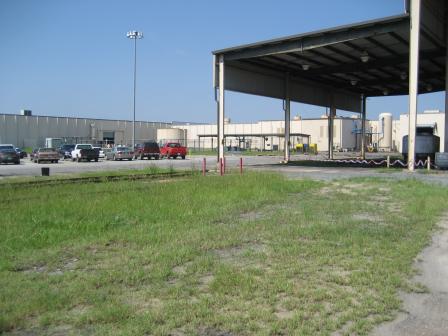 Firestone Tire & Rubber Co. (Albany Plant)The 329-acre Firestone Tire & Rubber Co. (Albany Plant) Superfund site is located near Albany, Georgia. Built in 1967, the facility included a 1.84-million-square-foot building with a courtyard area for material handling and shipping. Firestone Tire and Rubber Company made tires on site from 1968 to 1986. As part of shutting down its operations, the company completed voluntary site assessment and cleanup activities. Cooper Tire purchased the facility and made tires on site until 2009. A 1988 site inspection found that site activities had contaminated groundwater. EPA placed the site on the National Priorities List (NPL) in 1989. Cleanup activities included the excavation of contaminated soil, extraction and treatment of contaminated groundwater, groundwater monitoring, and well construction and water use restrictions. Soil cleanup finished in 1998. Groundwater cleanup is ongoing. Careful planning allowed for the continued use of the site throughout the cleanup process. Hilco Real Estate purchased the site property in late 2011. The company demolished most of the facility in 2012 to make the land more marketable. It sold the site property to W.P. Carey, a real estate development firm, in 2014. Part of the site is leased to Cooper Tire for use as a distribution center.
Firestone Tire & Rubber Co. (Albany Plant)The 329-acre Firestone Tire & Rubber Co. (Albany Plant) Superfund site is located near Albany, Georgia. Built in 1967, the facility included a 1.84-million-square-foot building with a courtyard area for material handling and shipping. Firestone Tire and Rubber Company made tires on site from 1968 to 1986. As part of shutting down its operations, the company completed voluntary site assessment and cleanup activities. Cooper Tire purchased the facility and made tires on site until 2009. A 1988 site inspection found that site activities had contaminated groundwater. EPA placed the site on the National Priorities List (NPL) in 1989. Cleanup activities included the excavation of contaminated soil, extraction and treatment of contaminated groundwater, groundwater monitoring, and well construction and water use restrictions. Soil cleanup finished in 1998. Groundwater cleanup is ongoing. Careful planning allowed for the continued use of the site throughout the cleanup process. Hilco Real Estate purchased the site property in late 2011. The company demolished most of the facility in 2012 to make the land more marketable. It sold the site property to W.P. Carey, a real estate development firm, in 2014. Part of the site is leased to Cooper Tire for use as a distribution center.
Last updated September 2019
As of December 2019, EPA had data on one on-site business. This business employed 21 people and generated an estimated $28,103,000 in annual sales revenue. For additional information click here.
For more information:
GAO 144 - Zonolite Road
The 16-acre GAO 144-Zonolite Road site is located in Atlanta, Georgia. A vermiculite expansion plant operated at the site from 1950 until 1970. As much as 1,225 tons of vermiculite concentrate from W.R. Grace’s Libby, Montana, vermiculite mine is believed to have been shipped to the site. Cleanup included excavation and off-site disposal of vermiculite and asbestos-contaminated materials, including soil. Remediation restored natural stormwater flow, resolving problems with extensive area flooding prior to cleanup. After grading and ecological restoration activities, volunteers planted trees and added trails to help the community enjoy the views of the South Fork of Peachtree Creek. Today, 13-acre Zonolite Park, now owned by DeKalb County, features 1.5 miles of walking trails as well as picnic tables, a pollinator garden and bird-watching resources. The park’s natural features include an old-growth forest, a native meadow and a wetland garden. Local wildlife includes deer, fish, frogs and birds, including songbirds, hawks and herons. EPA presented the South Fork Conservancy with EPA Region 4’s Excellence in Site Reuse Award for their work to restore the natural ecology and transform Zonolite Park into a recreational resource. An independent Zen Buddhist Meditation Center is also located on site, adjacent to Zonolite Park.
Last updated September 2019
As of December 2019, EPA had data on one on-site business. This business employed 10 people. For additional information click here.
For more information:
Hercules 009 Landfill 
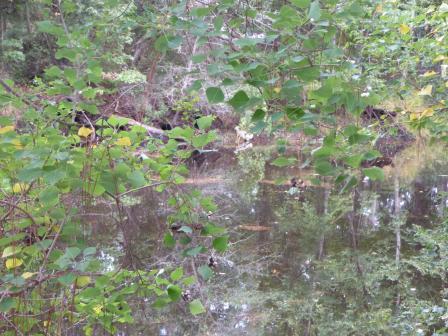 Hercules 009 LandfillThe 16.5-acre Hercules 009 Landfill Superfund site is located in Brunswick, Georgia. From 1948 to 1980, Hercules, Inc. used 7 acres at the northern end of the site, known as the 009 Landfill, to dispose of waste. In March 1980, sampling by the Georgia Environmental Protection Division (Georgia EPD) identified contamination on site. As a result, Georgia EPD canceled Hercules’ permit to operate the landfill. In 1982, site operations ceased. EPA placed the site on the National Priorities List (NPL) in 1984. In 1991 and 1993, EPA issued cleanup plans. The cleanup plans included stabilizing on-site soil and sludge; installing a cap over the landfill; monitoring groundwater, surface water and sediment in the on-site pond and the drainage ditch next to the site; and long-term landfill cap maintenance. Taking advantage of the location of the landfill cap, a car dealership north of the site worked with the potentially responsible party to return the site to use in a manner compatible with cleanup activities. The car dealership fenced and paved the top of the capped landfill to create a parking lot to display its cars. This use has helped to further preserve the integrity of the capped landfill. Hercules also worked with the Wildlife Habitat Council to obtain a Conservation Certification for the southern pond area on site. The company installed wildlife cameras, basking logs and cover boards to attract insects and reptiles. The cameras have documented raccoons, foxes, squirrels and birds at the site.
Hercules 009 LandfillThe 16.5-acre Hercules 009 Landfill Superfund site is located in Brunswick, Georgia. From 1948 to 1980, Hercules, Inc. used 7 acres at the northern end of the site, known as the 009 Landfill, to dispose of waste. In March 1980, sampling by the Georgia Environmental Protection Division (Georgia EPD) identified contamination on site. As a result, Georgia EPD canceled Hercules’ permit to operate the landfill. In 1982, site operations ceased. EPA placed the site on the National Priorities List (NPL) in 1984. In 1991 and 1993, EPA issued cleanup plans. The cleanup plans included stabilizing on-site soil and sludge; installing a cap over the landfill; monitoring groundwater, surface water and sediment in the on-site pond and the drainage ditch next to the site; and long-term landfill cap maintenance. Taking advantage of the location of the landfill cap, a car dealership north of the site worked with the potentially responsible party to return the site to use in a manner compatible with cleanup activities. The car dealership fenced and paved the top of the capped landfill to create a parking lot to display its cars. This use has helped to further preserve the integrity of the capped landfill. Hercules also worked with the Wildlife Habitat Council to obtain a Conservation Certification for the southern pond area on site. The company installed wildlife cameras, basking logs and cover boards to attract insects and reptiles. The cameras have documented raccoons, foxes, squirrels and birds at the site.
Last updated September 2019
As of December 2019, EPA had data on one on-site business. EPA did not have further economic details related to this business. For additional information click here.
For more information:
- Site Redevelopment Profile for the Hercules 009 Landfill Site (PDF)(2 pp, 2.3 MB)
- Sites in Continued Use: Glynn County Commercial Property (PDF)(1 pg, 1.5 MB)
- Superfund Site Profile Page
LCP Chemicals Georgia
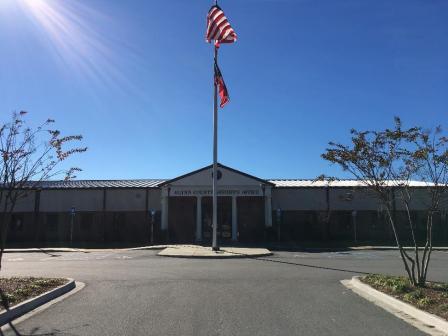 LCP Chemicals GeorgiaThe 813-acre LCP Chemicals Georgia Superfund site is located in Brunswick, Georgia. The site consists mainly of tidal marsh. A variety of industrial plants operated at the site between the early 1920s and 1994. Manufacturing activities, including an oil refinery, a paint manufacturing company, a power plant and a chlor-alkali plant, caused contamination at the site. EPA placed the site on the National Priorities List (NPL) in 1996. Cleanup is ongoing. In September 2015, EPA selected the final remedy for the tidal marsh. EPA worked closely with the Department of Justice on the Consent Decree for the marsh. A pilot study for the remedial design work at the marsh is underway. After coordinating closely with EPA, Glynn County decided to use part of the site property for a county detention center. Honeywell Corporation, the current site owner, and the County finalized a $475,000 agreement for use of a 35-acre tract for the 610-bed jailhouse. The $27.4-million facility opened in September 2014. It includes administrative office space for the Glynn County Sheriff's Office.
LCP Chemicals GeorgiaThe 813-acre LCP Chemicals Georgia Superfund site is located in Brunswick, Georgia. The site consists mainly of tidal marsh. A variety of industrial plants operated at the site between the early 1920s and 1994. Manufacturing activities, including an oil refinery, a paint manufacturing company, a power plant and a chlor-alkali plant, caused contamination at the site. EPA placed the site on the National Priorities List (NPL) in 1996. Cleanup is ongoing. In September 2015, EPA selected the final remedy for the tidal marsh. EPA worked closely with the Department of Justice on the Consent Decree for the marsh. A pilot study for the remedial design work at the marsh is underway. After coordinating closely with EPA, Glynn County decided to use part of the site property for a county detention center. Honeywell Corporation, the current site owner, and the County finalized a $475,000 agreement for use of a 35-acre tract for the 610-bed jailhouse. The $27.4-million facility opened in September 2014. It includes administrative office space for the Glynn County Sheriff's Office.
Last updated September 2019
As of December 2019, EPA had data on 2 on-site businesses. These businesses employed 98 people. For additional information click here.
For more information:
- Sites in Continued Use: Glynn County Commercial Property (PDF) (1 pg, 1.4 MB)
- LCP Chemicals Operable Unit 3 Quadrant 1 Ready for Reuse Determination (2012) (PDF)(15 pp, 3.3 MB, About PDF)
- Superfund Site Profile Page
Luminous Processes, Inc.
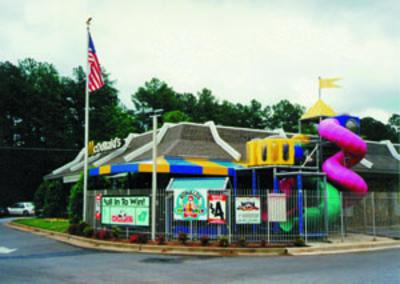 Luminous Processes, Inc.The 1-acre Luminous Processes, Inc. Superfund site is located in Athens, Georgia. For more than 35 years, the Luminous Processes company used radioactive isotopes to make glow-in-the-dark watch and clock dials on site. The company abandoned the site property in 1980, leaving behind a contaminated building and radioactive soil. In 1981, EPA proposed the site for listing on the National Priorities List (NPL) and provided funds to the state of Georgia to carry out the cleanup. State contractors excavated 18,000 cubic feet of contaminated soil, shipped off more than 2,400 drums and disposed of nearly 500 millicuries of radium-226. Excavated areas were then backfilled with clean fill and seeded with grass. Cleanup took five weeks and finished in December 1982; EPA never had to finalize the site’s listing on the NPL. Today, a fast-food restaurant is located on site.
Luminous Processes, Inc.The 1-acre Luminous Processes, Inc. Superfund site is located in Athens, Georgia. For more than 35 years, the Luminous Processes company used radioactive isotopes to make glow-in-the-dark watch and clock dials on site. The company abandoned the site property in 1980, leaving behind a contaminated building and radioactive soil. In 1981, EPA proposed the site for listing on the National Priorities List (NPL) and provided funds to the state of Georgia to carry out the cleanup. State contractors excavated 18,000 cubic feet of contaminated soil, shipped off more than 2,400 drums and disposed of nearly 500 millicuries of radium-226. Excavated areas were then backfilled with clean fill and seeded with grass. Cleanup took five weeks and finished in December 1982; EPA never had to finalize the site’s listing on the NPL. Today, a fast-food restaurant is located on site.
Last updated September 2019
As of December 2019, EPA had data on one on-site business. This business employed 40 people and generated an estimated $1,972,000 in annual sales revenue. For additional information click here.
For more information:
Macon Naval Ordnance Plant
The 433-acre Macon Naval Ordnance Plant (MNOP) Superfund site is located in Macon, Georgia, adjacent to the Armstrong World Industries (AWI) Superfund site. From 1941 to 1965, the U.S. Navy manufactured ordnance and conducted metal plating on site. From 1965 to 1981, various companies continued operations at the site, including ordnance manufacturing, metal plating and seat belt manufacturing. Improper handling, storage and disposal of hazardous substances resulted in site-wide contamination, including trichloroethylene (TCE) in the groundwater beneath the site. EPA placed the site on the National Priorities List (NPL) in 2013. Macon-Bibb County Industrial Authority has operated Allied Industrial Park on the site since 1980. In 2018, EPA completed negotiations with several potentially responsible parties to conduct the site’s remedial investigation and feasibility study. Field investigations are anticipated to start in 2019 and will include public outreach for both the AWI and MNOP sites.
Last updated September 2019
As of December 2019, EPA had data on 17 on-site businesses. These businesses employed 646 people and generated an estimated $72,925,000 in annual sales revenue. For additional information click here.
For more information:
Marzone Inc./Chevron Chemical Co.
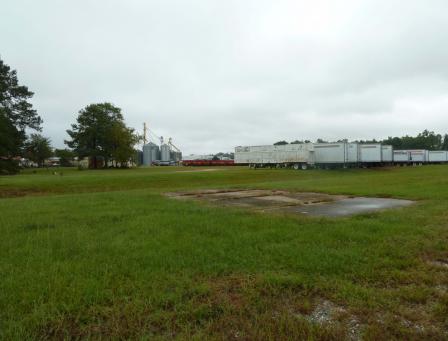 Marzone Inc./Chevron Chemical Co.The Marzone Inc./Chevron Chemical Co. Superfund site is located in Tifton, Georgia. Chevron Chemical Company owned and operated a pesticide and herbicide formulation plant on part of the site from 1950 to 1970. Several other companies, including Marzone Chemical Company, owned and operated the plant from 1970 to 1983. From the late 1960s to 1992, different companies, including Golden Seed, operated a formulation and packaging plant for pesticides and fertilizers on another part of the site. Operations at both plants resulted in contamination of soil, sediment and groundwater. In 1989, EPA added the site to the National Priorities List (NPL). Cleanup activities by the site’s potentially responsible party (PRP) included the removal of contaminated soil and sediment, groundwater treatment, groundwater use restrictions, and monitoring of the natural breakdown of contaminants. EPA cleanup also included the decontamination of buildings and equipment. Groundwater cleanup is ongoing. The property owner leased the parcel where the pesticide formulation facility had been located following the soil cleanup activities. Lessees have used the property for warehousing and scrap metal recycling.
Marzone Inc./Chevron Chemical Co.The Marzone Inc./Chevron Chemical Co. Superfund site is located in Tifton, Georgia. Chevron Chemical Company owned and operated a pesticide and herbicide formulation plant on part of the site from 1950 to 1970. Several other companies, including Marzone Chemical Company, owned and operated the plant from 1970 to 1983. From the late 1960s to 1992, different companies, including Golden Seed, operated a formulation and packaging plant for pesticides and fertilizers on another part of the site. Operations at both plants resulted in contamination of soil, sediment and groundwater. In 1989, EPA added the site to the National Priorities List (NPL). Cleanup activities by the site’s potentially responsible party (PRP) included the removal of contaminated soil and sediment, groundwater treatment, groundwater use restrictions, and monitoring of the natural breakdown of contaminants. EPA cleanup also included the decontamination of buildings and equipment. Groundwater cleanup is ongoing. The property owner leased the parcel where the pesticide formulation facility had been located following the soil cleanup activities. Lessees have used the property for warehousing and scrap metal recycling.
Last updated September 2019
As of December 2019, EPA had data on 2 on-site businesses. These businesses employed 6 people and generated an estimated $486,000 in annual sales revenue. For additional information click here.
For more information:
Monsanto Corp. (Augusta Plant)
The 75-acre Monsanto Corporation Superfund site is located in an industrial park in Augusta, Georgia. Chemical plant operations involving the production of phosphoric acid began at the site in 1962. Over the years, the Monsanto Corporation dumped wastes and sludge in two small landfills on site. Contamination from these landfills eventually spread to the groundwater. In 1984, EPA added the site to the National Priorities List (NPL). Under the direction of EPA and the State, Monsanto Corporation cleaned up the site, removing the contents of both landfills and transporting the waste to a licensed facility. The company also built a system to clean up contaminated groundwater. EPA took the site off the NPL in 1998. The cleanup protects the health and safety of the public and the environment while enabling the facility to continue to operate, retaining jobs and income in the community. Prayon, the current owner of the facility, purchased the site property from Monsanto in 1999. The company continues to make phosphoric acid on site.
Last updated September 2019
As of December 2019, EPA had data on one on-site business. This business employed 80 people and generated an estimated $25,185,185 in annual sales revenue. For additional information click here.
For more information:
Peach Orchard Road PCE Groundwater Plume Site
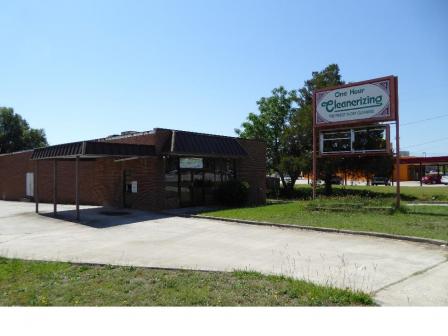 Peach Orchard Road PCE Groundwater Plume SiteThe 350-acre Peach Orchard Road PCE Groundwater Plume Superfund site is located in Augusta, Georgia. Area land uses include small shopping centers, dry cleaners, gas stations, auto salvage yards and automotive repair shops. EPA determined that four of nine area dry cleaners contributed to contamination in groundwater. In 2005, EPA added the site to the National Priorities List (NPL). Cleanup activities include groundwater treatment and soil removal and treatment. EPA made sure that commercial uses at the site could continue during cleanup.
Peach Orchard Road PCE Groundwater Plume SiteThe 350-acre Peach Orchard Road PCE Groundwater Plume Superfund site is located in Augusta, Georgia. Area land uses include small shopping centers, dry cleaners, gas stations, auto salvage yards and automotive repair shops. EPA determined that four of nine area dry cleaners contributed to contamination in groundwater. In 2005, EPA added the site to the National Priorities List (NPL). Cleanup activities include groundwater treatment and soil removal and treatment. EPA made sure that commercial uses at the site could continue during cleanup.
Last updated September 2019
As of December 2019, EPA had data on 2 on-site businesses. These businesses employed 7 people and generated an estimated $243,000 in annual sales revenue. For additional information click here.
For more information:
T.H. Agriculture & Nutrition Co. (Albany Plant)
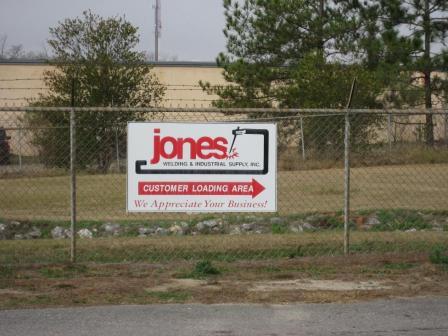 T.H. Agriculture & Nutrition Co. (Albany Plant)The 12-acre T.H. Agriculture & Nutrition Co. (Albany Plant) Superfund site is located in Albany, Georgia. Two pesticide formulation facilities operated on site from the 1950s to the 1980s. Waste handling operations resulted in contamination of soil, sediment and groundwater. EPA added the site to the National Priorities List (NPL) in 1989. Cleanup activities included pumping and treating groundwater, treating contaminated soil, monitoring air quality and groundwater, and placing restrictions on land and groundwater use. Two businesses now operate on site – a welding supply business and a construction company.
T.H. Agriculture & Nutrition Co. (Albany Plant)The 12-acre T.H. Agriculture & Nutrition Co. (Albany Plant) Superfund site is located in Albany, Georgia. Two pesticide formulation facilities operated on site from the 1950s to the 1980s. Waste handling operations resulted in contamination of soil, sediment and groundwater. EPA added the site to the National Priorities List (NPL) in 1989. Cleanup activities included pumping and treating groundwater, treating contaminated soil, monitoring air quality and groundwater, and placing restrictions on land and groundwater use. Two businesses now operate on site – a welding supply business and a construction company.
Last updated September 2019
As of December 2019, EPA had data on 2 on-site businesses. These businesses employed 26 people and generated an estimated $8,404,364 in annual sales revenue. For additional information click here.
For more information:
Woolfolk Chemical Works, Inc. 

The 31-acre Woolfolk Chemical Works, Inc. Superfund site is located in Fort Valley, Georgia. For more than 60 years, the Woolfolk Chemical Plant produced a variety of agricultural pesticides on site. Over time, chemicals used at the plant seeped into the ground and polluted the groundwater. In 1990, EPA placed the site on the National Priorities List (NPL). EPA cleaned up polluted soil, contaminated groundwater and residences. Today, homes once affected by the site’s contamination are clean and remain in use. The Troutman House, a once-contaminated antebellum farmhouse, was converted into a Welcome Center and office space for the Fort Valley Chamber of Commerce. Fort Valley is reusing another former residence nearby as an adult education center. A Prospective Purchaser Agreement with EPA enabled Fort Valley to build a library and literacy center on site. EPA’s Superfund Redevelopment Initiative (SRI), with matching resources from Region 4, provided support for a reuse plan at the site in 2002. EPA also supported a regional seed project at the site in 2008. In recognition of the local government’s proactive engagement and support of reuse, EPA presented the city of Fort Valley with Region 4’s Excellence in Site Reuse Award in 2009. Two years later, public health staff from Peach County and Houston County received EPA’s Notable Achievement Award. This Award recognized the staff’s sustained and thorough understanding of environmental justice concerns and assistance providing opportunities for the Woolfolk community to play a meaningful role in the environmental decision-making process. EPA continues to work with the community to integrate local reuse priorities into cleanup for the rest of the site. Norfolk Southern Railroad tracks and a station are located on the northwest part of the site. A bus company parks buses on a paved portion of the site. Fort Valley Festival Park opened on site in 2012 and is a major tourism draw for the area. The Fort Valley Public Works Department also built a community playground on site in 2013.
Last updated September 2019
As of December 2019, EPA had data on 8 on-site businesses. These businesses employed 55 people and generated an estimated $11,861,443 in annual sales revenue. For additional information click here.
For more information:
- Sites in Continued Use: Fort Valley Mixed Use Property (PDF) (1 pg, 1.1 MB)
- Redevelopment of the Woolfolk Chemical Works Superfund Site (PDF)(1 pg, 67 K, About PDF)
- Fort Valley, Georgia Receives the Fourth Excellence in Site Reuse Award on the 10th Anniversary of the Superfund Redevelopment Initiative
- Video: Life After Superfund Exit
- Superfund Site Profile Page
